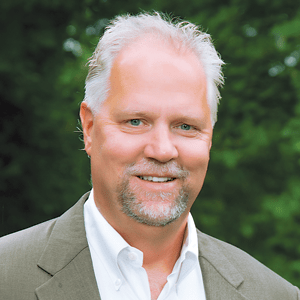
I actually can’t remember back to a time when the words ‘nursing shortage’ weren’t spoken.
That calculous takes in a half century, which anecdotal as the reference may be, points at least in the general direction of a trend. For as far back as I can recall the nursing profession has been a pretty sure bet for a great career of service and satisfaction.
It is, as they say, a seller’s market, attracting its appropriate fair share of the best and the brightest.
And yet this country, and more specifically, Washington state, faces an ever-worsening nursing shortage; one that is tumbling down a slippery slope to a full-blown crisis. Washington is projected to have a shortage of 7,000 nurses by 2025, ranking 45th among the 50 states for available nurses.
The deficit – whether viewed as a snapshot or a moving picture – places a significant and untenable burden on healthcare and provider facilities to staff shifts with active nurses.
Federal and state rules, meanwhile, force an unfunded mandate on minimum patient-to-staff ratios and requirements for the needed number of active nursing personnel. As a result, many facilities are unable to grow their censuses and accept new patients, or are in danger of falling out of compliance all together.
In Oregon the problem may be even worse. According to the June 30, 2016, edition of the Lund Report, demand for registered nurses is spiking, Oregon is facing a nursing shortage of more than 7,000 by 2025.
“Vacancy and turnover rates in key health sectors have all increased since 2004,” reports Jana Bitton, Oregon Center for Nursing’s Executive Director. “If these trends continue, we are looking at a sizeable gap in the number of nurses we have by 2025.”
The shortages, according to Bitton, will not be across the board, however. Urban areas of the state may actually achieve a modest surplus. It is in the rural areas where the shortages will be most dramatically seen and felt.
“When we talk about nursing shortages, it’s not necessarily in a hospital in an urban area,” said Bitton. “If you were to talk to somebody in a rural part of the state or managing a long-term care facility, they would say there’s a shortage.”
What’s the solution?
At Vancouver-based Westby Associates, Inc., we have teamed up with Southwest Oregon Workforce Investment Board out of Coos Bay, Ore., to identify and respond to a critical pinch point in the looming crisis.
The shortage starts in the classroom, fueled by a lack of nursing faculty. Nursing graduates, it seems, are drawn in much greater numbers to become providers rather than teachers because the pay incentive is close to double. On top of that the continuing education requirement of a master’s degree can be an additional $60,000 in overhead to carry on a teacher’s salary.
The SOWIB/WAI solution is to fund $25,000 fellowships that will be awarded to faculty candidates to help offset the loss of income experienced through their choice to teach.
“It levels the playing field,” says SOWIB Deputy Director Kyle Stevens, who with the support of WAI originated and is implementing the concept. “It is a workaround in that we know it is not the long-term solution. The long-term solution is legislative.”
To that end, Oregon Senate Bill 754 is making its way towards a vote in the 2019 session. The Bill, which has been advancing, creates a $10,000 income tax credit for rural nurse faculty members.
“Beyond that, we are working with our local delegation on the big picture,” says Stevens. “It is a problem that is worth solving, and we have momentum.”
That momentum is building, too. Other agencies have been inquiring as to replication possibilities. “If it works here, it can work in other places,” Stevens says.
Outside the healthcare impacts of increasing the number of nurses there is a nascent financial windfall. Hospitals spend an inordinate amount of resources on traveling nurses. Higher education, meanwhile, invests heavily in infrastructure and capital that is often under-utilized. That return on investment could be better leveraged.
The shifting ground surrounding healthcare access and delivery is certainly a dynamic, volatile and complex landscape. There is rarely one answer that is in and of itself adequate and sufficient. And so it is with the nursing shortage. Solving the pay inequities between providers and faculty does not on its own address the urban vs. rural imbalance, and the challenges of recruitment and retention in small-town America.
Senate Bill 754 goes a long way toward helping Oregonians improve their access to nurses in rural areas there. Washington should consider similar legislation.
Meanwhile we will all watch how the SOWIB/WAI workaround solution fares. It could give ‘Made in Oregon’ a brand new claim to fame.
Mike Westby is president and CEO of Westby Associates, Inc., which provides customized consultant/practitioner services to nonprofit and public service agencies, assisting them to think and act strategically. Mike can be reached at mtwestby@westbyassociates.com.


